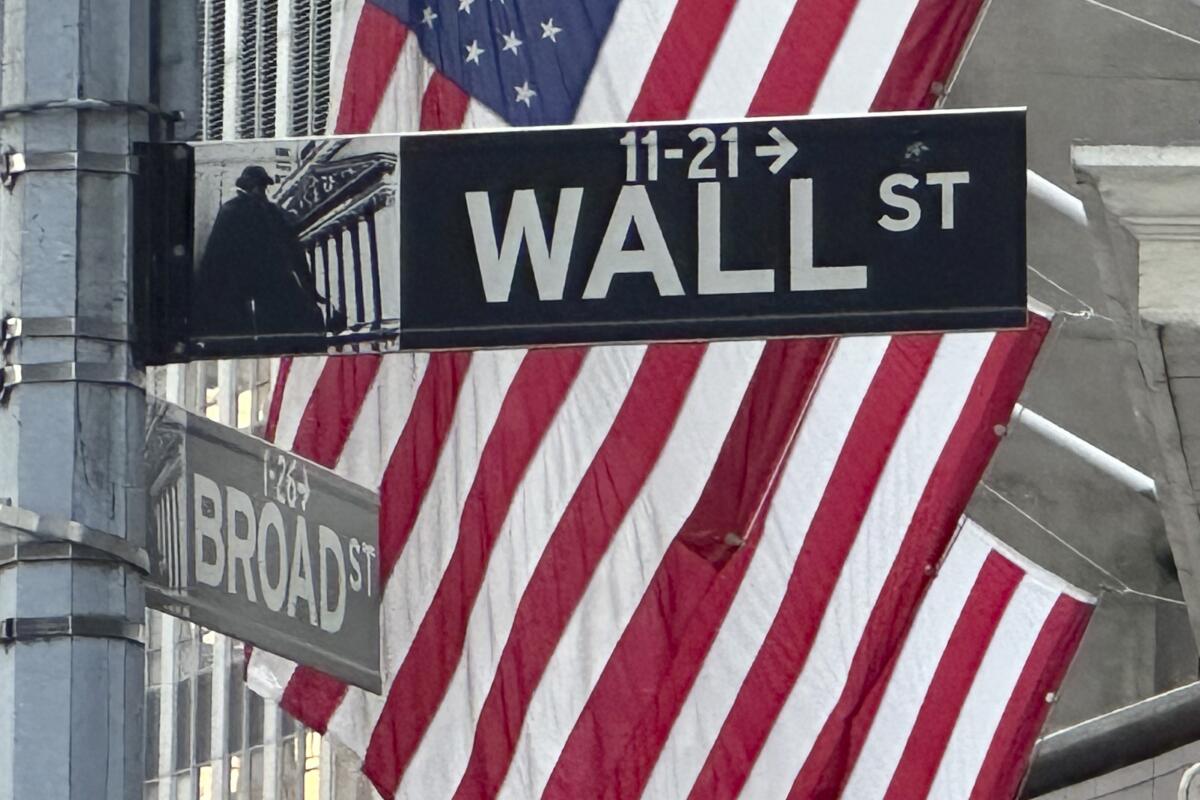Most of Wall Street slips as S&P 500 stays on track for worst week since April

NEW YORK â Most U.S. stocks fell Thursday after a mixed round of data on the economy, keeping them on track for their worst week since April.
The Standard & Poorâs 500 slipped 0.3% for a third straight drop, and the Dow Jones industrial average lost 0.5%. The Nasdaq composite held up better than the rest of the market and added 0.3% thanks to gains for Tesla and a handful of other major tech stocks.
Treasury yields also slipped a bit in the bond market after the mixed economic reports. One suggested U.S. companies slowed their hiring last month, falling well short of economistsâ forecasts for an acceleration. Another report, though, said fewer U.S. workers filed for unemployment benefits last week than expected. Thatâs an indication that layoffs remain low.
A report released later in the morning offered more optimism, saying growth for businesses in the finance, healthcare and other services industries was stronger last month than economists expected.
âGenerally, business is good,â one respondent said in the survey compiled by the Institute for Supply Management. âHowever, there are concerns of slowing foot traffic at restaurants and other venues where our products are sold.â
Stocks have struggled this week after another dud of a report on U.S. manufacturing reignited worries about the slowing U.S. economy and how much it could hurt corporate profits. That has raised the stakes for a highly anticipated report scheduled for Friday.
Thatâs when the U.S. government will say how many jobs U.S. employers added last month, and economists are expecting an acceleration of hiring. The job marketâs performance could dictate how big of a cut to interest rates the Federal Reserve will deliver at its next meeting later this month.
After keeping its main interest rate at a two-decade high to stifle inflation, the Federal Reserve has hinted itâs about to begin cutting rates in order to protect the job market and keep the overall economy from sliding into a recession. The question on Wall Street is if that ends up being too little, too late.
In the bond market, the yield on the 10-year Treasury eased to 3.73% from 3.76% late Wednesday. Itâs down from 4.70% in April, which is a significant move for the bond market.
Perhaps more important for investors, the 10-year yield is flirting with the end of a more than two-year stretch where it was lower than the two-year Treasury yield. Thatâs an unusual occurrence called an âinverted yield curve.â Usually, longer-term yields are higher than shorter-term yields.
Many investors see an inverted yield curve as a warning of a coming recession, and the inversion since the summer of 2022 has been a key talking point for market pessimists. Often, an inverted yield curve flips back to normal ahead of a recession as traders cement their expectations for coming interest rate cuts by the Fed. But the 2020 pandemic created a recession and resulting recovery that have often defied predictions and conventional wisdom.
The two-year Treasury yield was sitting at 3.74%, just above the 10-year yield.
On Wall Street, Old Dominion Freight Line was among the sharpest decliners in the S&P 500 after reporting discouraging revenue trends for August. It cited âsoftness in the domestic economy,â along with lower fuel surcharge revenue, for the weakness. The freight companyâs stock fell 4.9%.
Verizonâs stock slipped 0.4% after it announced its plan to buy Frontier Communications in a $20-billion deal to strengthen its fiber network. Frontier Communications, which soared nearly 38% the day before, gave back 9.5%.
On the winning end of Wall Street was Tesla. It rose 4.9% after laying out a road map for upcoming artificial intelligence developments, including the possibility of so-called âfull self-drivingâ features in Europe and China.
JetBlue Airways flew 7.2% higher after raising its forecast for revenue in the summer. It said that itâs seeing better performance in the Latin America region in particular and that it picked up business when technology outages in July forced rivals to cancel flights.
All told, the S&P 500 dipped 16.66 points to 5,503.41. The Dow dropped 219.22 points to 40,755.75, and the Nasdaq composite rose 43.36 points to 17,127.66.
In stock markets abroad, indexes were mixed across Asia and Europe.
Japanâs Nikkei 225 fell 1.1% after strong data on growth in wages there raised expectations for another hike to interest rates.
Choe writes for the Associated Press.
More to Read
Inside the business of entertainment
The Wide Shot brings you news, analysis and insights on everything from streaming wars to production â and what it all means for the future.
You may occasionally receive promotional content from the Los Angeles Times.










